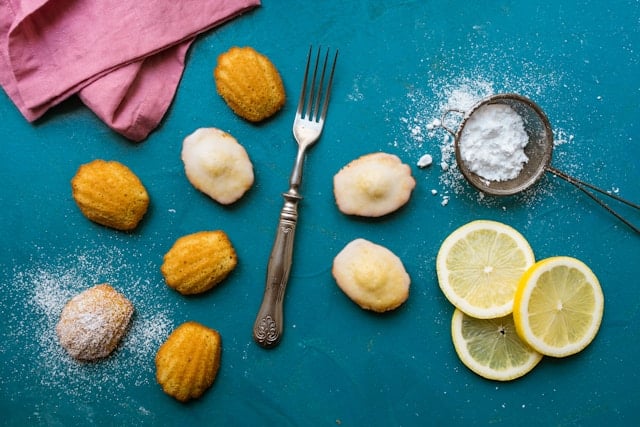French macarons are delicate, sweet pastries renowned for their unique texture and beautiful presentation. They are prized for their crisp shells, soft and slightly chewy interiors, and the delectable fillings that sandwich them. Making a perfect French macaron can be a daunting task, but with the right techniques and a little practice, you can master the art of making this exquisite dessert. In this article, we’re going to show you the techniques you need to make the flawless French macaron.
The Importance of Ingredients
Before you start making your macarons, it’s important to understand the crucial role each ingredient plays in the recipe. Macarons have a very short ingredient list: almond flour, egg whites, sugar, and sometimes a pinch of salt or cream of tartar.
En parallèle : What’s the Secret to the Ultimate Vegan Chocolate and Avocado Mousse?
Almond flour, made from finely ground almonds, gives the macaron its distinctive flavour and texture. You should be able to find it in most grocery stores, but if not, you can make your own by grinding blanched almonds until they’re very fine.
Egg whites, when whipped, create the fluffy and light texture that is crucial to a good macaron. They need to be at room temperature before you start whipping them.
A lire également : How to Create a Spanish Gazpacho with the Perfect Balance of Acidity?
Sugar is essential not only for sweetness but also for structure. You’ll use two types, granulated and powdered, in different parts of the recipe. The granulated sugar will be beaten into the egg whites to create the meringue, while the powdered sugar will be combined with the almond flour to create the dry mix.
Mastering the Meringue
One of the key techniques in macaron making is whipping up the perfect meringue. The meringue is essentially whipped egg whites and sugar, and it’s what gives the macaron its light, airy texture.
First, beat the egg whites in a clean, dry bowl until foamy. It’s important that the bowl is completely clean and dry because any trace of oil or water can prevent the egg whites from whipping properly. Once the whites are foamy, gradually add the granulated sugar while continuing to beat the egg whites. Keep beating until the meringue is glossy and holds stiff peaks.
Remember, overbeating or underbeating the meringue can lead to macarons that are too dense or too hollow, so you’ll need to find that sweet spot where the meringue is just right.
The Macaronage Process
Once you have your meringue and your dry mix (the almond flour and powdered sugar), you’ll combine them in a process called macaronage. This is another technique that’s critical to making perfect macarons.
Add the dry mix to the meringue and start folding them together. The goal is to fully incorporate the dry mix without deflating the meringue. This is why you need to fold the mixture, rather than stirring or beating it.
The consistency you’re looking for is similar to lava. The batter should flow slowly and steadily, but not be runny. If the batter is too stiff, the macarons will not spread properly and may have peaked tops. If the batter is too loose, the macarons will spread too much and may not develop the characteristic feet.
Piping and Baking
Once the batter is just right, it’s time to pipe out the macarons and bake them. Use a piping bag fitted with a round tip to pipe out equal-sized circles onto a baking sheet lined with parchment paper. Let the piped macarons sit at room temperature for about 30 minutes. This allows a skin to form on top, which is necessary for the macarons to develop their characteristic feet while baking.
Bake the macarons in a preheated oven. The exact baking time will depend on your oven and the size of your macarons but expect it to be around 10-15 minutes. The macarons are done when they have risen, developed feet, and can be easily lifted off the parchment paper.
Crafting the Perfect Filling
The filling is where you can get really creative with your macarons. You can use buttercream, ganache, jam, or any combination thereof. The key is to match the flavour of the filling with the macaron shell for a harmonious taste experience.
To assemble the macarons, pair up the shells by size. Add a dollop of filling to the flat side of one shell, then top with the second shell, flat side down. Be gentle, as the shells are quite delicate.
Remember, macarons are best after they’ve been filled and left to rest in the fridge for a day. This allows the flavours to meld and the texture to become just right – crisp on the outside, soft and chewy on the inside.
Tailoring the Flavor with Food Coloring and Flavor Extracts
When making French macarons, it’s possible to tailor both the flavor and color of your macarons to suit your preference. Food coloring and flavor extracts play a vital role here. To color your macaron shells, add a few drops of gel food coloring to your whipped egg whites. Water-based food coloring can alter the consistency of your macaron batter, so gel food coloring is best to use. Be careful with the quantity of food coloring used. Too much can alter the texture and structure of your macarons.
Flavor extracts, on the other hand, can be added to both the macaron batter and the filling. A few drops of an extract like almond, lemon, or vanilla can truly elevate the taste of your macarons. However, like food coloring, it’s important to exercise restraint when using extracts. Too much can overpower the delicate taste of the macaron shells and filling.
Remember, the flavor of your macarons comes primarily from the filling. Therefore, consider the flavor of your filling when deciding on the flavor extracts for your macaron shells. The objective is to create a harmonious blend of flavors that complement each other rather than compete for dominance.
Dealing with Potential Challenges
Making macarons can be a bit tricky. There are a few common challenges that people often encounter when making these delightful pastries. One of these is the formation of cracks on the surface of the macaron shells. This can occur if your batter is overmixed, or if your resting macarons aren’t thoroughly dried before baking.
Another challenge is hollow shells. This usually happens when the meringue is overbeaten or the oven temperature is too high. Ensure that the meringue holds stiff peaks and is not overly dry before you incorporate it with the dry ingredients. Also, make sure the oven temperature is accurate by using an oven thermometer.
If macarons spread out and become too flat, it could be due to the macaron batter being too runny. This can happen when the meringue is under-beaten or when the batter is overmixed during the macaronage process. Always aim for a thick, lava-like consistency when mixing your batter.
Remember, practice makes perfect. Don’t be disheartened if your first batch of macarons doesn’t turn out perfect. Keep trying, and over time you’ll likely master the art of making flawless French macarons.
Conclusion
Creating the perfect French macaron can be a daunting task, with several crucial steps to master. From selecting top-quality ingredients like almond flour and egg whites, mastering the meringue, perfecting the macaronage process, to piping and baking, every step counts. Remember to be patient and precise when incorporating the dry ingredients to prevent deflating the meringue. Piping equal-sized macaron shells, letting them rest before baking, and crafting a balanced filling are all essential steps for success. With a bit of practice and creativity, you can undoubtedly master the art of creating perfect French macarons. It’s a rewarding and sweet journey, well worth your time and effort. Happy baking!
















